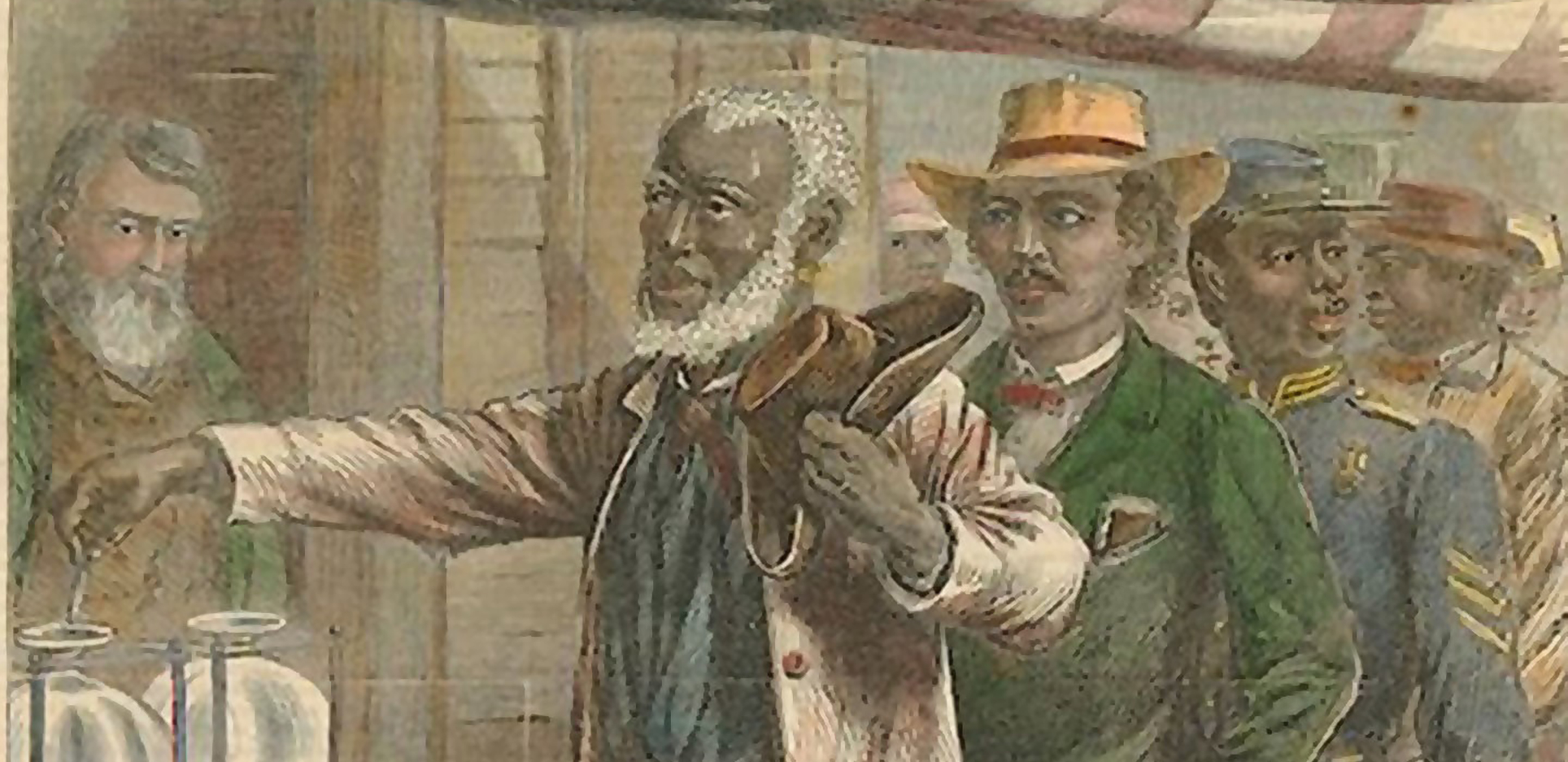
The Necessity of the 14th Amendment
Students will use primary and secondary sources to answer the question: Why was passage of the 14th Amendment significant in securing the rights of African Americans following the Civil War?
Students should have prior knowledge of Reconstruction before beginning the lesson.
Common Core Standards
CCSS.ELA-LITERACY.RH.11-12.1
Cite specific textual evidence to support analysis of primary and secondary sources, connecting insights gained from specific details to an understanding of the text as a whole.
CCSS.ELA-LITERACY.RH.11-12.7
Integrate and evaluate multiple sources of information presented in diverse formats and media (e.g., visually, quantitatively, as well as in words) in order to address a question or solve a problem.
CCSS.ELA-LITERACY.RH.11-12.2
Determine the central ideas or information of a primary or secondary source; provide an accurate summary that makes clear the relationships among the key details and ideas.
| Learning Objectives | Students will understand how Reconstruction policies were often rejected, ignored or manipulated to hurt rather than help African Americans.Students will understand the struggles of African Americans in the “New South” during Reconstruction.Students will be able to make an argument, supported by evidence, that answers a contextualized question. |
| Guiding Questions | Why is the 14th Amendment significant?What factors motivated the push for, and ratification of, the 14th Amendment?In what ways did the 14th Amendment impact African-American and minority rights in post-Civil War America?Why was passage of the 14th Amendment significant in securing the rights of African Americans following the Civil War? |
| Prepared by | Grade | Length |
| Kira Jordan | Eleventh and Twelfth Grade | Two Days |
Classroom Activities
- Lesson Activity One: Understanding the 14th Amendment
Students will be introduced to the context of the 14th Amendment and its various protections. - Lesson Activity Two: Evaluating Reasons for the 14th Amendment
Students will be introduced to the political, social, and economic situation of the U.S. (especially the South) between 1865-1870. - Lesson Activity Three: Argumentative Response
Students will create a written argumentative response to the guiding question, “Why was passage of the 14th Amendment significant in securing the rights of African Americans following the Civil War?”
Procedures:
Lesson Activity One: Understanding the 14th Amendment
- Individually, students will read through and annotate the text of the 14th Amendment, section 1, to gain an understanding of what the amendment guaranteed. As a class, led by the teacher, students will generate reasons as to why the amendment was needed following the Civil War. This should be in introductory assignment and be limited to 20 minutes for 11th and 12th grade students.
Lesson Activity Two: Evaluating Reasons for the 14th Amendment
- Following Activity 1, students may work independently or in small groups to annotate and analyze each document. They should use the questions provided on the documents to assist in their understanding of the document and formulating an argument. Alternatively, the teacher may want to assign small groups one of the documents to complete a “jigsaw” activity, with each group presenting their own document to the class. Students should focus on their own understanding of the document as it answers the guiding question for the lesson—what argument could they make, and what evidence within the text supports their view?
NOTE: For classes that are not on a block schedule, the first two activities should be completed in one 50 min. class period.
Lesson Activity Three: Argumentative Response
- As a class, the teacher should review the documents to assist with formulating arguments to the guiding question and finding supporting evidence. Students will then complete a written response to the guiding question, making sure to complete an argument supported by evidence from the documents. Students should have at least 30 minutes to write a well-developed essay.
